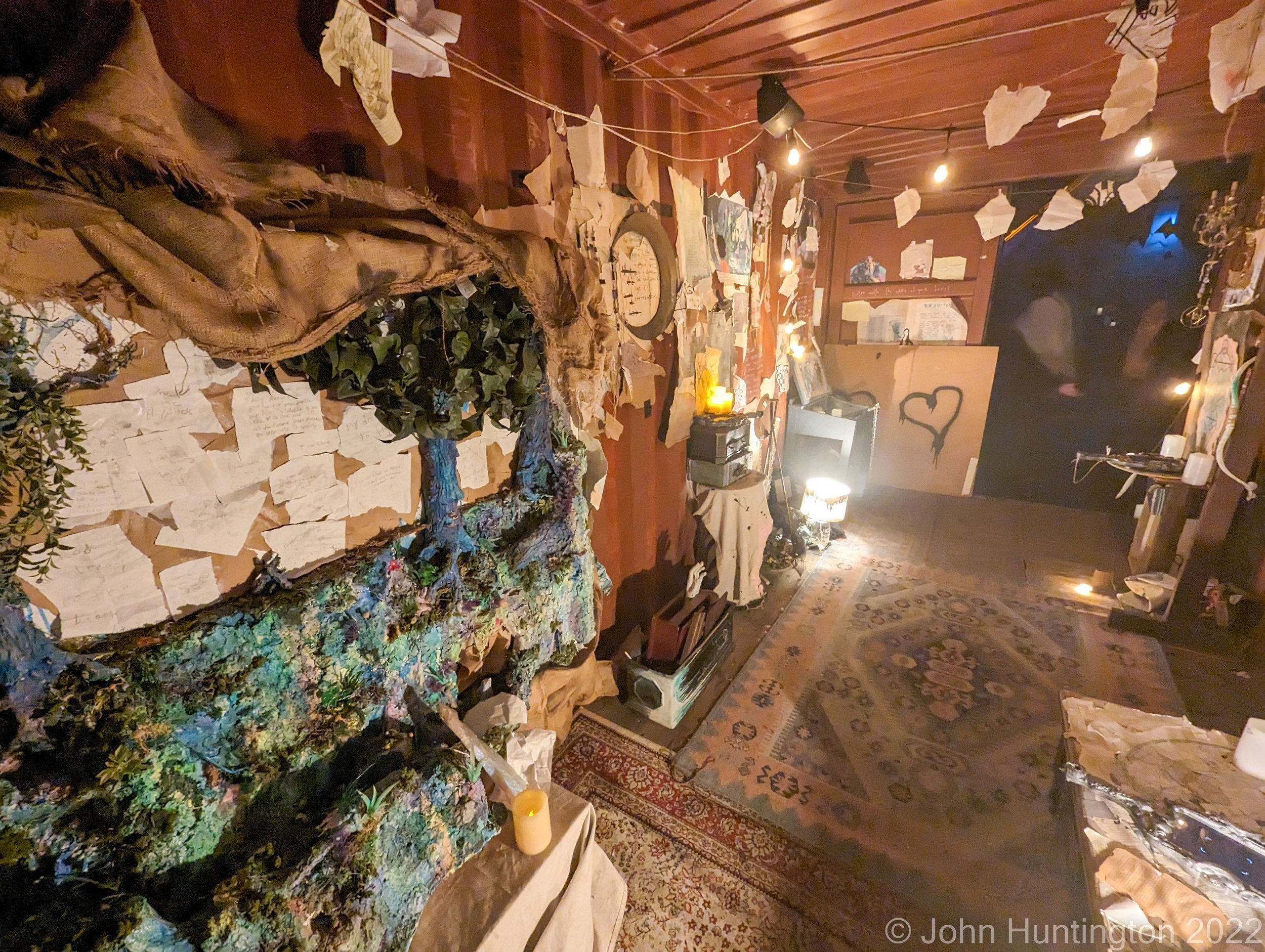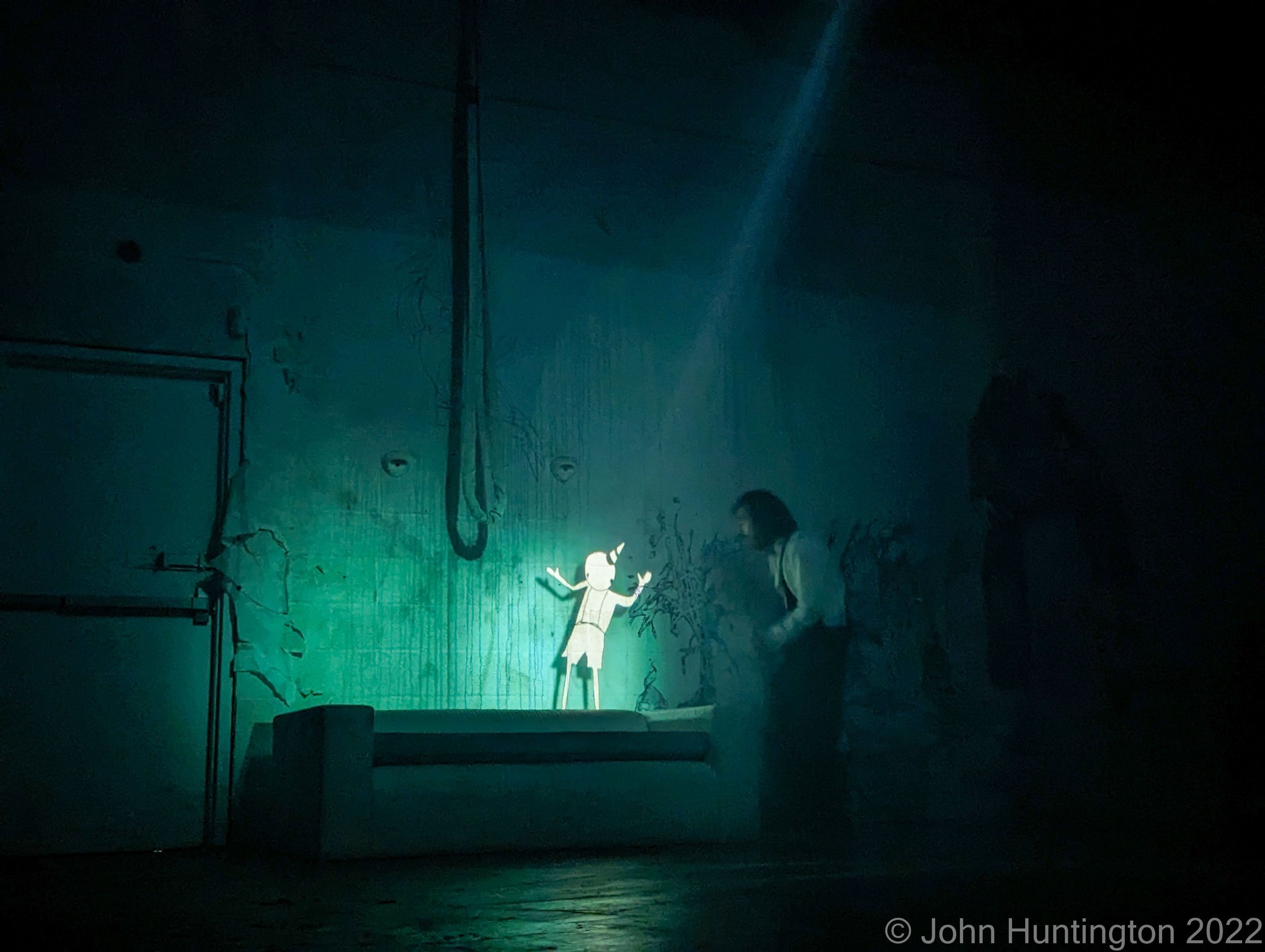Particle Ink's Speed of Dark—Wow
Particle Ink’s Speed of Dark was one of the most inventive shows I’ve seen in a long time, and is that rare example where modern storytelling technology forms a core of the experience, while the show remains emotionally evocative and retains a heart. I saw it back in November in Vegas just before it closed.
Here’s some video:
The “immersive” buzzword is now so overused as to be meaningless, but I guess this show would fall into that broad category; they also describe it as a “a graphic novel come to life”. From their website:
There is a world that exists all around us, that you can't usually see. It is an invisible landscape inhabited by beings of pure light and creativity. They have had many names throughout the aeons, from fae to aliens to angels, but in actual fact, they are Lumins. Lumins live in the 2.5th dimension, the "in between place" - that weird space where the rabbit waits before being pulled out of the hat and where creative ideas wait to be discovered. Follow us into the 2.5th and immerse yourself in the mind-bending place where magick, imagination and technology collide to transport you to a new form of Storyliving.
The show starts outside an old warehouse in the new Vegas arts district, with some preliminary AR experiences offered on well-themed IPads, and then a puppet in an apparent pile of trash sets the stage. We then move into the warehouse, and the audience starts all together to be introduced to the story before splitting up into smaller groups/experiences. Eventually the whole group comes back together for the finale.
It’s been a couple months since I saw it and my memory is a bit fuzzy, so I’ll let NoPro explain it (read the rest of their review and writeup here):
The story of Speed of Dark is archetypal enough: a creator and his wife, grieving over a loss, find their world turned upside down after he finds a magical book and uses a spell to try and fix things. It doesn’t go as planned, and soon the forces he’s unleashed take over their home. It takes a group effort, between the human characters, the audience, a puppet, and the animated figures known as Lumens to bring balance back between the forces of light and darkness both without and within.
On a fairly modest budget, this talented team has brought together dance, gymnastics, and circus arts with projection mapping, lasers, animation, (and of course sound, scenery, lighting, etc). There are some bonus AR experiences inside the venue, but (fortuitously, in my opinion) they are more of secondary experience and not core to the story. AR experiences aside, I speculate that there wasn’t much interactivity in the show; instead, I imagine that the rehearsal was a painstaking and meticulous process, leveraging the amazing skills of the talented cast and their ability to sync to timed sequences. Few in the audience would likely realize this, and the simplicity of this approach maximizes reliability.
Creative Team
For some reason, they are bit cagey about the creative team, but if you do a bit of digging you can find out the key players. The show is “presented” by Kaleidoco and I was lucky to meet Darin Basile, “Head of Technology and co-Creator” in the parking lot after the show. The two other credited co-creators are “Dandypunk”, Head of Animation, and Jo Cattell, Head of Content. Dandypunk has a vimeo channel with examples of their work here, there’s a very cool video demonstration from 2012 here, and another called “Imagineers in Exile”. Cattell has a website here and an interview here with some videos.
Putting the Tech in Context
In 2019, I wrote a couple articles about live entertainment technological development (you can read them here), positing that many entertainment technologies reached an important maturity point around 2010. Around that time, high quality projection started getting more affordable, as did increased computer power and many other key show technologies. The broader availability of these tools meant that artists could innovate without the millions of dollars, massive custom systems, and teams of experts used by something like Cirque du Soleil’s and Robert Lepage’s 2005 amazing KÀ (that show predated even this blog, but my extensive writeup of that show in Lighting and Sound America is viewable here). So around that 2010 inflection point, smaller companies like the amazing Australian dance company Chunky Move started making incredible work on a smaller budget, like 2009’s Mortal Engine (my writeup here). And we started seeing more creative technological integration with groups like Miral Kotb’s Iluminate (more info from me here) who even got on America’s got Talent in 2011. And further on in that development process, we have things like Say Something Bunny in 2019 (my writeup here).
I’m adding Speed of Dark to my milestone list of brilliantly creative integrations, where a very inventive group of artists took a mature, affordable storytelling toolset to the next level, all the while retaining an emotional core. It’s another great example that these days we are often more limited more by imagination than budget. While the traditional theatre world lumbers along, small creative groups like this one are doing really brilliant work in places long derided by snobs, like Vegas. I think we’re entering an exciting period now, post COVID lockdown.
While Speed of Dark has closed for now, from what I heard they are planning to roll out a new version in a new location sometime later this year, and as soon as I hear of a date I will be planning to see it, and I suggest you do the same.
This show really pushed the capabilities of my Pixel 7, but here’s some shots to give you an idea of what the experience was like. You can also see some video on their website here.



























